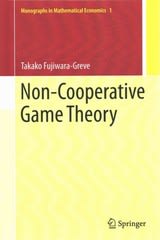Answered step by step
Verified Expert Solution
Question
1 Approved Answer
Define in words mutually exclusive events. Choose the correct answer below. A. Events A and B are mutually exclusive if all of the sample points
Define in words mutually exclusive events. Choose the correct answer below. A. Events A and B are mutually exclusive if all of the sample points in A are also in B or vice versa. B. Events A and B are mutually exclusive if A contains all sample points not contained in B and vice versa. C. Events A and B are mutually exclusive if A and B have no sample points in common. D. Events A and B are mutually exclusive if A and B contain exactly the same sample points. Define the union of two events. Choose the correct answer below. A. The union of two events A and B is the event that occurs if only one of A or B occurs on a single performance of an experiment. B. The union of two events A and B is the event that occurs if neither A nor B occurs on a single performance of an experiment. C. The union of two events A and B is the event that occurs if either A or B (or both) occurs on a single performance of an experiment. D. The union of two events A and B is the event that occurs if both A and B occur on a single performance of an experiment. Define in words the complement of an event. Choose the correct answer below. A. The complement of an event A is any event that has no sample points in common with event A. B. The complement of an event A is the probability of all sample points in event A. C. The complement of an event A is the event consisting of all sample points that are not in event A. D. The complement of an event A is the event consisting of exactly the same sample points that are in event A. State the additive rule of probability for mutually exclusive events. Choose the correct answer below. A. P(A B)=1P(A)P(B) B. P(A B)=P(A)P(B) C. P(A B)=P(A)+P(B) D. P(A B)=P(A)+P(B) If A and B are any two events, then which of the following formulas best describes the additive rule of probability? Choose the correct answer below. A. P(AB)=P(A)+P(B)P(AB) B. P(AB)=P(A)+P(B)+P(AB) C. P(AB)=P(A)+P(B)
Step by Step Solution
There are 3 Steps involved in it
Step: 1

Get Instant Access to Expert-Tailored Solutions
See step-by-step solutions with expert insights and AI powered tools for academic success
Step: 2

Step: 3

Ace Your Homework with AI
Get the answers you need in no time with our AI-driven, step-by-step assistance
Get Started


